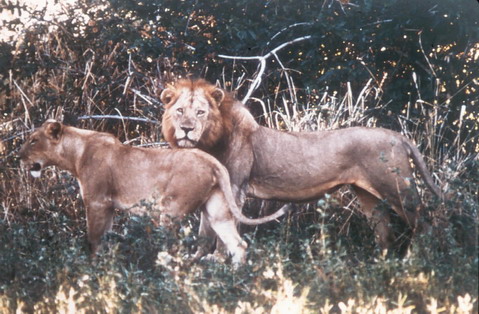In Zambia's Luangwa Valley, rain and river create a wildlife stronghold.
The Luangwa, one of the last major unaltered rivers in southern Africa, is the lifeline—and protector—of the valley it threads. Hippos, elephants, giraffes, lions, leopards, buffalo, and scores of other species flourish in the 20,000 square miles (52,000 square kilometers) of savanna-woodland watered by this 500-mile-long (800 kilometers) river. It is people that have been scarce here, especially beyond the town of Mfuwe. One reason is the Luangwa's annual flood cycle. Each year during the rains, the river reinvents the land. Swelling from a knee-deep stream to a roiling brown torrent, it carves new channels and spills into surrounding plains and woodlands, making this broad valley in eastern Zambia impassable by road for nearly half the year. For the other half, the waters retreat, leaving behind a rejuvenated landscape, which slowly parches through the long dry months that follow, when temperatures steadily climb until the land throbs with heat and thirst.
By late October, the floodplains are grazed to stubble, and a hot wind spins dust devils in the powdery soil. At dusk, hippos leave the river's last deep pools and melt into the darkness of the bush to forage. Some walk for miles to find food, and many die in this season of stress. One morning a small dead hippo floats by. Female hippos approach and nuzzle it, licking its skin, then moving away.
The seasons can be hard on the valley's wildlife, but people have been harder still. Hunting and poaching, even within the national parks, have drastically reduced hippo and elephant populations in the past, yet both have made a comeback, thanks in part to changes in enforcement and attitude. The resurgence is a sign of human tolerance and nature's resilience.
In November thunderheads build, bruised and dark, and the sky rumbles all night. One afternoon the earthy aroma of an approaching downpour blows in on a hard wind, and a cool gray curtain of rain sweeps the land, beating down in a torrent, rinsing dust from grasses and trees. Almost overnight, green shoots poke up from the earth. Bare mopani woodlands shimmer pink with new leaves. Lemon yellow blooms pop from acacias, and fragile spider lilies spring up in white drifts on the plains. Elephants and buffalo disperse into the uplands, where the browse is fresh. Impalas give birth, and zebras materialize from the bush with tiny foals.
Within days of the first rain, Abdim's storks appear overhead, wheeling in great gyres of thousands of birds. They are migrating south, and some Africans know them as bringers of rain. They touch down in a bobbing mass, moving together through the grass in a broad front, like fire, finding frogs and insects brought forth by the water. A new season is here.
http://ngm.nationalgeographic.com/2007/05/zambia-wildlife/eckstrom-text.html
Monday, May 11, 2009
Subscribe to:
Post Comments (Atom)

No comments:
Post a Comment